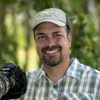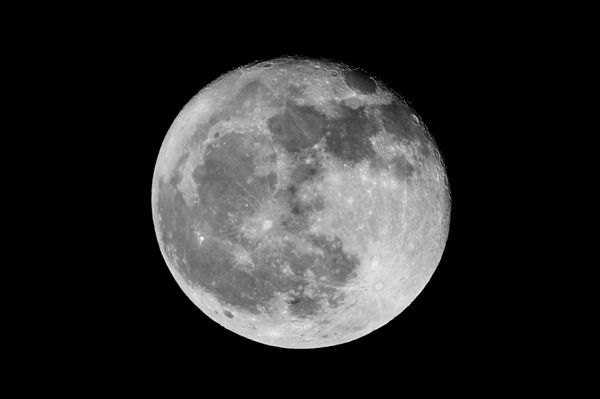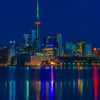Getting Successful Shots of the Moon
Oct 25, 2018 19:51:54 #
Marlz wrote:
Photo #2
Ok, you have a mirrorless camera, so you don’t have to guess. You see exactly what the picture is going to look like prior to pressing the shutter.
Oct 25, 2018 20:04:36 #
Not really. They always look not good in the display, but in Lightroom I can play with sliders to pull out the details I want.
Oct 25, 2018 20:10:38 #
A couple of things - the first shot shows blur, either motion of heavy atmosphere, one of the two (I'm leaning towards the latter - the lower the moon, the more air you have to shoot through). As for the reflection, that's likely due to a UV filter or possibly internal reflections within the lens itself.
Oct 25, 2018 20:23:50 #
Marlz wrote:
Not really. They always look not good in the display, but in Lightroom I can play with sliders to pull out the details I want.
In that case, you need to learn how your camera works. It should look good in the viewfinder. Otherwise the exposer is off.
Oct 25, 2018 20:56:39 #
Number 3 appears to have lens flare or filter reflections as Steve said. Number 2 appears to be out of focus, but could be motion blur (can’t read any EXIF data). Hard to tell about number one. The moon seems to be overexposed, but could also be out of focus or motion blur. Would be helpful to have the EXIF/exposure info. Do you have it or a record of the shutter speed? That would help rule out motion blur.
Oct 25, 2018 21:33:07 #
I was using a tripod with the 2 sec timer, and I had Steady Shot OFF, so I don't think it was blur, so the heavy atmosphere, maybe, but the night seemed crisp and mostly clear. I had taken the UV filter off, so it was not that. So all were shot RAW, AWB, Auto ISO, and 0.00 Exposure. #1 Moon only photo: ISO 1250, f/8, 1/320 second; #2: ISO 3200, f/8, .5 sec.; #3 the lens flare one ... so how does one avoid this? Again, I had taken the UV filter off. I can see by my info that settings were way off what is being suggested here. I started out in Manual mode and manual focus, but it was taking me so long, and the moon was moving fast, I switched to Av. Know now I have to use manual and get faster at it - in the dark ... hard for me to see the camera controls ... all amateur stuff, I realize. I just want to get one good moon shot in my life!! :) I'm taking notes on all the input on this thread ... and will keep trying!
Oct 25, 2018 22:35:33 #
larryepage
Loc: North Texas area
Let's just change a couple of things so that you can start zeroing in. Instead of AWB, set to daylight/direct sun. That's what always hits the moon. As you learn, you can correct (if you like) for redder images of the moon when it is near the horizon. And you don't need a high ISO...this is "noontime daylight," remember? So you don't need nearly as much exposure as you are giving it. Set the ISO to something like 200. Next, you are not likely going to be able to meter accurately...way too much contrast between the moon and the dark sky. So switch to manual and set exposure to f/11 at 1/200 second (remember the Loony 11 rule discussed earlier? Finally, the surface of the moon is not conducive to automatic focusing, so you are going to have to switch to manual focus and do it by hand. Later you may be able to learn to autofocus on the edge (they call it the limb) of the moon, but it can be tricky getting everything lined up.
Try this, step by step, and see if your results start to improve. Remember...there is nothing automatic about this. Be patient and keep trying.
Try this, step by step, and see if your results start to improve. Remember...there is nothing automatic about this. Be patient and keep trying.
Oct 25, 2018 22:46:22 #
Marlz wrote:
I was using a tripod with the 2 sec timer, and I h... (show quote)
Since you already have suggestions for exposure values (and you fortunately have good data for your exposures to compare), my one comment is that perhaps go back to manual focus, but try it on a distant object in the daytime and mark where infinity focus actually is for the lens you’re using. Many lenses will focus past actual infinity or the markings are off.
Oct 25, 2018 23:00:07 #
Strodav
Loc: Houston, Tx
Marlz wrote:
Beautiful full Hunter's Moon last night, and I ble... (show quote)
Taken tonight, 10/25/18.
Nikon D7200, Tamron 150-600mm f5-6.3 G2, ISO 200, f11, 1/125, 600mm, tripod mounted, remote release, Hoya UV filter in place, cropped and converted to B&W in Lightroom Classic CC. Increased contrast a touch. Did try some shots in manual focus, but most, including this one, were in AF-S
Found a tutorial online to get my initial settings, took a couple of test shots in Live View and AF-S, and they weren't too bad. Made a couple of adjustments and viola, a reasonable shot of the moon over SE Texas.
Oct 26, 2018 06:32:53 #
dsmeltz wrote:
OK. "Functionally" a light source. You can treat it like casually reflected ambient light if you like.
I think the response should be; oops you are right. I was mistaken.
Oct 26, 2018 06:56:43 #
billnikon
Loc: Pennsylvania/Ohio/Florida/Maui/Oregon/Vermont
Marlz wrote:
Beautiful full Hunter's Moon last night, and I ble... (show quote)
Basic exposure of moon is. MANUAL MODE on the camera and 1/ISO at F16. So, if your ISO is 200, then your starting exposure is 1/200 sec. at f16. If your ISO is 400, then your base exposure of the moon is 1/400 sec. at f16. Good luck and keep on shooting until the end.
Oct 26, 2018 07:42:36 #
Wonderful, kind and helpful words to someone just beginning! Thank you, all! I am making a cheat sheet with all the points mentioned in this thread. We live in the country; we have a yard light that shines like the moon. Maybe I can use it to practice through all the suggestions that were made so that I do not have to wait out the days until the next full-ish event. :) Stroday, I wish your shot was mine! My equipment falls a bit short, however. If nothing else, the many responses got me pumped to not give up! Love my little camera and how it stretches my brain to figure out something new.
Oct 26, 2018 07:47:22 #
Largobob wrote:
The moon is NOT a light source. It reflects sunlight.
ALL of the images that we, as photographers capture, are of reflected light. Unless you are taking pictures of the sun, speed lights, or studio lights.
Oct 26, 2018 07:55:11 #
traderjohn wrote:
I think the response should be; oops you are right. I was mistaken.
OK. Apology accepted.
Oct 26, 2018 07:59:03 #
DavidPine
Loc: Fredericksburg, TX
Tripod, f/11, 1/200-1/250, ISO100, 200mm, RAW
Marlz wrote:
Beautiful full Hunter's Moon last night, and I ble... (show quote)
If you want to reply, then register here. Registration is free and your account is created instantly, so you can post right away.






